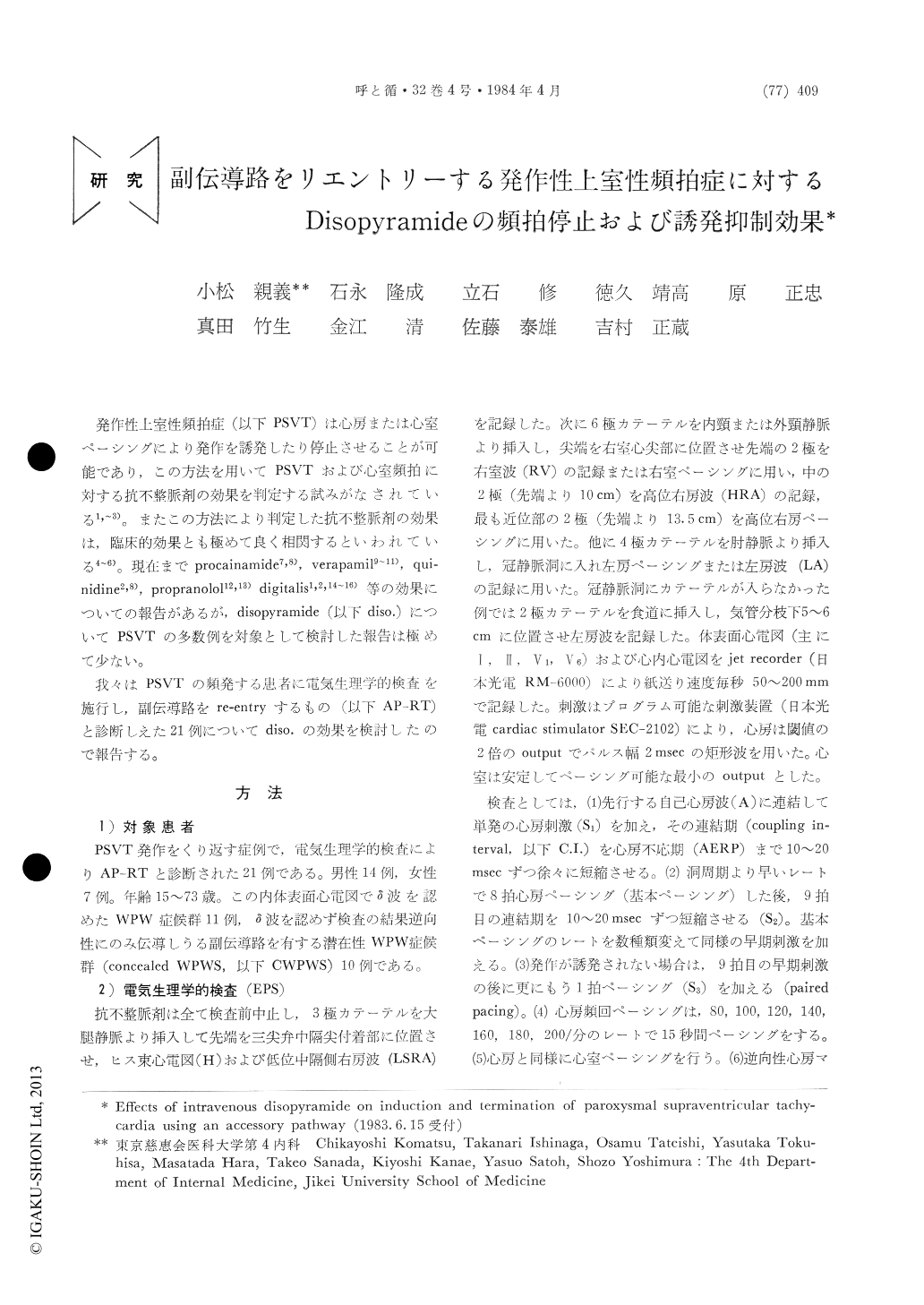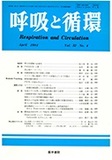Japanese
English
- 有料閲覧
- Abstract 文献概要
- 1ページ目 Look Inside
発作性上室性頻拍症(以下PSVT)は心房または心室ペーシングにより発作を誘発したり停止させることが可能であり,この方法を用いてPSVTおよび心室頻拍に対する抗不整脈剤の効果を判定する試みがなされている1,〜3)。またこの方法により判定した抗不整脈剤の効果は,臨床的効果とも極めて良く相関するといわれている4〜6)。現在までprocainamide7,8),verapamil9〜11),qui—nidine2,8),propranelol12,13)digitalis1,2,14〜16)等の効果についての報告があるが,disopyramide (以下diso.)についてPSVTの多数例を対象として検討した報告は極めて少ない。
我々はPSVTの頻発する患者に電気生理学的検査を施行し,副伝導路をre-entryするもの(以下AP-RT)と診断しえた21例についてdiso.の効果を検討したので報告する。
The effects of intravenous disopyramide 50mg on the induction and termination of paroxysmal supra-ventricar tachycardia were studied in 21 patients with reentrant tachycardia using an accessory path-way (AP-RT). In five out of 19 patients, sustained PSVT was terminated after disopyramides adminis-tration, and in all these five patients, tachycardia was terminated by V-A block. In six out of 21 pa-tients, including the five patients whose PSVT was terminated by disopyramide, sustained tachycardia was not induced after disopyramide administra-tion. In all six patients, echo zone disappeared com-pletely or decreased. The mean cycle length of tachycardia increased after disopyramide, but this increase was due to the increase of V-A interval, while A-V and A-H intervals were somewhat de-creased. The site of action of disopyramide on AP-RT was thought to be the accessory pathway.

Copyright © 1984, Igaku-Shoin Ltd. All rights reserved.


